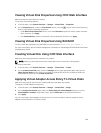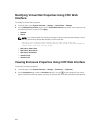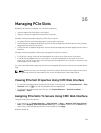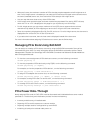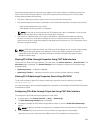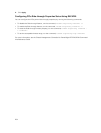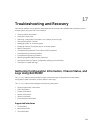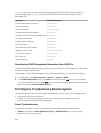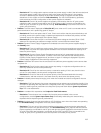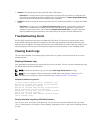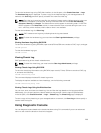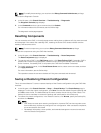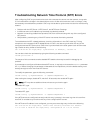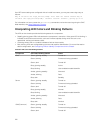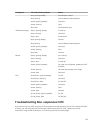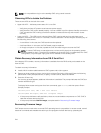– Resolution A: This configuration requires at least one power supply in side 1 (the left two slots) and
one power supply in side 2 (the right two slots) to be present and functional in the modular
enclosure. Additionally the capacity of each side must be enough to support the total power
allocations for the chassis to maintain Grid redundancy. (For full Grid Redundancy operation,
make sure that a full PSU configuration of four power supplies is available.)
– Resolution B: Check if all power supplies are properly connected to the two AC grids; power
supplies in side 1 must be connected to one AC grid, those in side 2 must be connected to the
other AC grid, and both AC grids must be working. Grid Redundancy is lost when one of the AC
grids is not functioning.
• Problem: The PSU state is displayed as Failed (No AC), even when an AC cord is connected and the
power distribution unit is producing good AC output.
– Resolution A: Check and replace the AC cord. Check and confirm that the power distribution unit
providing power to the power supply is operating as expected. If the failure still persists, call Dell
customer service for replacement of the power supply.
– Resolution B: Check that the PSU is connected to the same voltage as the other PSUs. If CMC
detects a PSU operating at a different voltage, the PSU is turned off and marked Failed.
• Problem: Dynamic Power Supply Engagement is enabled, but none of the power supplies display in
the Standby state.
– Resolution A: There is insufficient surplus power. One or more power supplies are moved into the
Standby state only when the surplus power available in the enclosure exceeds the capacity of at
least one power supply.
– Resolution B: Dynamic Power Supply Engagement cannot be fully supported with the power
supply units present in the enclosure. To check if this is the case, use the web interface to turn
Dynamic Power Supply Engagement off, and then on again. A message is displayed if Dynamic
Power Supply Engagement cannot be fully supported.
• Problem: Inserted a new server into the enclosure with sufficient power supplies, but the server does
not power on.
– Resolution A: Check for the system input power cap setting—it might be configured too low to
allow any additional servers to be powered up.
– Resolution B: Check for the maximum power conservation setting. If this is set, then this issue
occurs. For more details, see the power configuration settings.
– Resolution C: Check for the server slot power priority of the slot associated with the newly-
inserted server, and then ensure it is not lesser than any other server slot power priority.
• Problem: Available power keeps changing, even when the modular enclosure configuration has not
changed.
– Resolution: CMC has dynamic fan power management that reduces server allocations briefly if the
enclosure is operating near the peak user configured power cap; it causes the fans to be allocated
power by reducing server performance to keep the input power draw below System Input Power
Cap. This is normal behavior.
• Problem: <number>W is reported as the Surplus for Peak Performance.
– Resolution: The enclosure has <number>W of surplus power available in the current
configuration, and the System Input Power Cap can be safely reduced by this amount being
reported without impacting server performance.
• Problem: A subset of servers lost power after an AC Grid failure, even when the chassis was operating
in the Grid Redundancy configuration with four power supplies.
– Resolution: This can occur if the power supplies are improperly connected to the redundant AC
grids at the time the AC grid failure occurs. The Grid Redundancy policy requires that the left two
power supplies be connected to one AC grid, and right two power supplies be connected to other
AC grid. If two PSUs are improperly connected, such as PSU 2 and PSU 3 are connected to the
wrong AC grids, an AC grid failure cause loss of power to the least priority servers.
207



